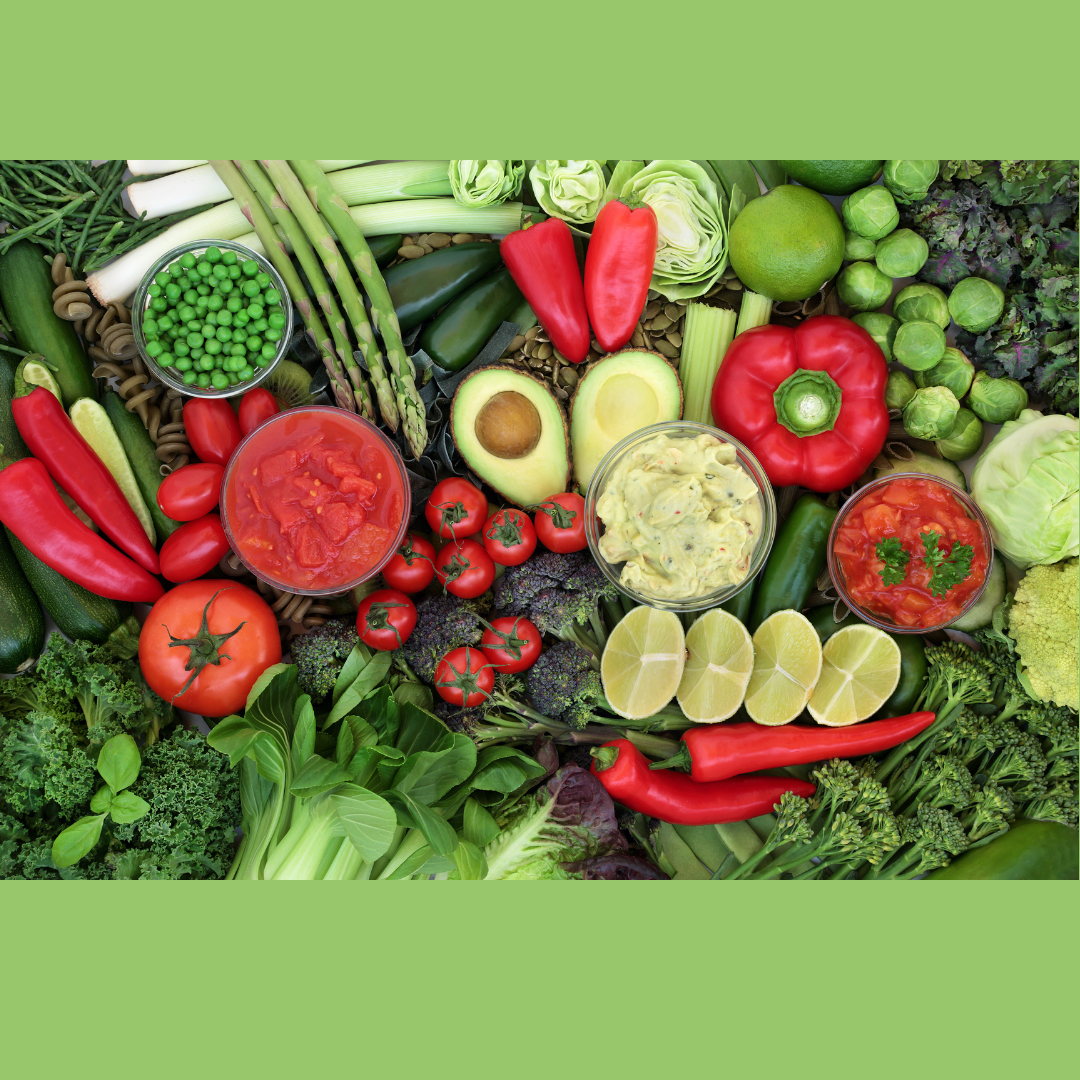Diabetes management can be daunting, but did you know that choosing the right foods can make it easier? Low GI foods are an important part of a diabetes-friendly diet. This blog post will explain what low GI foods are and how they impact your blood sugar levels. We also discuss the importance of including these foods in your diet and provide a list of low GI fruits, vegetables, whole grains, and legumes. Additionally, we'll give you ideas for incorporating low GI foods into your meals with sample meal plans and snacks. Finally, we'll dive into how following a low GI diet can improve your overall health while addressing potential challenges you may face along the way.
Understanding What Low GI Foods Are
Low GI foods are a key component of healthy eating, especially for managing diabetes. These foods have a lower impact on blood sugar levels as they are digested and absorbed slowly, providing sustained energy. Additionally, incorporating low GI foods into your diet can help control appetite and promote weight management. By reducing the risk of chronic diseases, low GI foods play an important role in maintaining overall health. Some examples of low GI foods include whole grains, legumes, and certain fruits and vegetables. It's important to make healthy choices and consume a variety of different foods to maintain optimal health.
The Concept of Glycemic Index (GI)
The glycemic index (GI) is a measurement of how quickly carbohydrates in food raise blood sugar levels. Foods with a high GI are rapidly digested and cause a rapid increase in blood glucose levels. On the other hand, low GI foods have a slower digestion rate, resulting in a slower rise in blood sugar. Understanding the GI of different foods can help individuals make healthier choices and manage their blood glucose levels effectively. The GI scale ranges from 0 to 100, with pure glucose having a GI of 100. By incorporating low GI foods into their diet, individuals can promote healthy eating, manage their blood sugar levels, and make informed decisions about their overall health.
How Carbs Impact GI Levels
Carbohydrates play a significant role in determining food's glycemic index (GI). The type of carb consumed can affect how quickly blood glucose levels rise. Simple carbs, like white bread and sugary snacks, have a higher GI as they are quickly broken down and absorbed by the body. On the other hand, complex carbs, such as whole grains and fiber-rich foods, have a lower GI because they are digested more slowly. Including protein and healthy fats along with carbohydrates can lower the overall GI of a meal. By balancing carb intake with other nutrients, individuals can promote better blood sugar control.
Importance of Low GI Foods for Managing Diabetes
Including low GI foods in meals is of utmost importance for individuals with diabetes. These foods play a crucial role in managing blood sugar levels and preventing spikes in blood glucose. By incorporating low GI foods into their diets, individuals can significantly reduce the need for insulin. Moreover, consuming low GI foods helps to maintain stable energy levels throughout the day. It is worth noting that low GI foods are an essential component of a healthy eating plan for individuals with diabetes. By managing blood sugar through diet, the risk of complications associated with diabetes can be decreased significantly.
The Role of Nutrition in Blood Sugar Management
Proper nutrition plays a crucial role in maintaining stable blood sugar levels. Incorporating low GI foods into your diet can help achieve this goal as they provide a steady release of glucose into the bloodstream. By balancing carbohydrates, protein, and healthy fats, you can support healthy blood sugar levels. Additionally, low GI foods are nutrient-dense, offering important vitamins and minerals that are essential for overall health. Including these healthy choices in your diet can not only help control diabetes but also promote overall well-being. Remember to make different food choices with low GI values such as watermelon, unripe bananas, and wholegrain options.
Factors Influencing the GI Value of Foods
Cooking and processing methods play a significant role in determining foods' glycaemic index (GI) value. It's important to note that overcooking or overprocessing can increase the GI of certain foods. On the other hand, combining foods can have an impact on the overall GI of a meal. Adding fat or acid to a meal can lower its GI value, making it a healthier choice for individuals looking to manage their blood glucose levels. Additionally, the ripeness of fruits and vegetables can affect their GI, with unripe bananas having a lower GI than ripe ones. Understanding these factors can help individuals make healthier choices to maintain stable blood sugar levels.
How Cooking and Processing Affects GI
Overcooking starchy foods can disrupt their structure, increasing their glycaemic index (GI). On the other hand, boiling or steaming vegetables tends to preserve their low GI value, making them a healthy choice for managing blood glucose levels. Processing methods that remove fibre can raise the GI of grains and cereals, so opting for whole, unprocessed versions is important. By choosing cooking techniques that retain nutrients, such as lightly steaming or baking, you can contribute to a lower GI and ensure your body's cells receive the necessary nutrients.
The Influence of Food Combinations on GI
Combining different foods together can have a significant impact on the glycemic index (GI) of a meal. When low GI foods are paired with higher GI foods, the overall GI of the meal can be lowered. This is because including protein, healthy fats, and fiber with carbohydrates slows down the digestion process, leading to a more gradual release of glucose into the bloodstream. Additionally, pairing a high GI food with a low GI food can result in a moderate GI value for the meal. It's also important to consider the portion size or glycemic load when assessing the impact of food combinations on GI. The right food combinations can play a key role in managing blood sugar levels effectively.
A List of Common Low GI Foods
When it comes to managing diabetes, incorporating low GI foods into your diet can be beneficial. Here is a comprehensive list of low GI foods that you can include in your meals. Low GI fruits such as apples, berries, and citrus fruits are excellent choices. Vegetables like leafy greens, broccoli, and peppers also have a low GI. Additionally, whole grains like oats, quinoa, and whole wheat are great options. Legumes such as chickpeas, lentils, and black beans provide valuable nutrients with a low GI. Finally, nuts and seeds like almonds and chia seeds can be healthy additions to your low GI diet.
Low GI Fruits and Vegetables
Including low GI fruits and vegetables in your diet is a healthy choice, especially for managing diabetes. Berries like strawberries, blueberries, and raspberries have a low glycemic index (GI), meaning they have a minimal impact on blood glucose levels. Citrus fruits such as oranges and grapefruits are also low GI options. Leafy green vegetables like spinach, kale, and lettuce are packed with essential nutrients and have a low GI. Non-starchy vegetables like broccoli, cauliflower, and bell peppers are another smart choice. Don't forget to include high-fiber fruits like apples, pears, and kiwi, which have a low GI and offer additional health benefits.
Whole Grains and Legumes with Low GI
Whole grains and legumes with a low glycemic index (GI) are excellent additions to a healthy eating plan for managing diabetes. These foods provide sustained energy and promote satiety, helping to stabilize blood glucose levels. Additionally, they are packed with important nutrients and fiber essential for overall health. Whole grains like oats, quinoa, whole wheat, and legumes such as chickpeas, lentils, and black beans have low GI ratings. Including these foods in your diet can reduce the risk of heart disease and support optimal blood glucose management.
Sample Meal Plan Incorporating Low GI Foods
A well-planned meal that incorporates low GI foods can be beneficial for managing diabetes. Start the day with a nutritious breakfast, such as a bowl of oatmeal or whole grain toast. For lunch, opt for a salad filled with leafy greens, vegetables, and lean protein. At dinner, include grilled chicken, brown rice, and steamed vegetables to create a satisfying and low GI meal. Snack on fruits, nuts, or yogurt throughout the day to maintain healthy blood glucose levels. By making these healthy choices and incorporating different low GI foods into your diet, you can support your overall wellbeing and manage diabetes effectively.
Low GI Breakfast, Lunch, and Dinner Ideas
Kickstart your day with a nourishing breakfast by opting for a bowl of steel-cut oats topped with a variety of fresh berries. For a flavor-packed lunch, indulge in a whole grain wrap stuffed with delicious roasted vegetables and a generous spread of hummus. When it comes to dinner, treat yourself to a wholesome meal of succulent grilled salmon accompanied by nutrient-rich quinoa and a side of steamed broccoli. Looking for a tasty low GI breakfast option? Whip up some scrambled eggs and pair them with whole grain toast and creamy avocado. And for a satisfying lunch, savor a vibrant salad brimming with mixed greens, grilled chicken, juicy cherry tomatoes, all tossed in a tangy vinaigrette dressing.
Healthy Low GI Snack Options
For healthy and filling snack options that won't spike your blood glucose levels, consider incorporating low GI foods into your diet. Nibble on a handful of almonds or walnuts packed with nutrients and have a low glycaemic index (GI). Sliced cucumbers with hummus offer a refreshing and fibre-rich snack. Fresh fruits like apples or pears provide a natural sweetness and are high in soluble fibre. Greek yogurt with berries and a sprinkle of granola is a satisfying choice. And for a flavourful option, pair carrot sticks with guacamole. These snacks taste great and help maintain stable blood glucose levels throughout the day.
Potential Challenges in Following a Low GI Diet
Finding low GI options while dining out or ordering takeout can be challenging. Processed foods may contain hidden sugars or high GI ingredients, making it difficult to stick to a low GI diet. Additionally, the cost of certain low GI foods may be higher compared to processed alternatives. Following a low GI diet requires careful planning and preparation for meals and snacks. It may also take time to adjust to the taste and texture of some low GI foods. Despite these challenges, maintaining a low GI diet is crucial for managing diabetes and promoting overall health.
How Can Low GI Diet Improve Your Overall Health?
A low GI diet can have a positive impact on your overall health. It helps regulate blood sugar levels, provides sustained energy, and reduces the risk of blood sugar spikes. Low GI foods are nutrient-dense and support weight management. Additionally, they have been linked to a reduced risk of type 2 diabetes and cardiovascular disease.
How can incorporating more low GI foods into your diet help with weight loss?
Incorporating more low GI foods into your diet can help with weight loss because they have a slower digestion and absorption rate, which helps keep you fuller for longer. This can reduce cravings and prevent overeating, leading to a calorie deficit and weight loss.
Conclusion
Incorporating low GI foods into your diet can be a game-changer for managing diabetes. These foods slowly and gradually impact blood sugar levels, helping stabilize them and preventing spikes and crashes. By understanding the concept of glycemic index and how different factors can influence it, you can make informed choices about the foods you consume. From fruits and vegetables to whole grains and legumes, there is a wide variety of low GI options to choose from. With a little creativity, you can create delicious and satisfying meals that are both healthy and blood sugar-friendly. By following a low GI diet, not only can you better manage your diabetes, but you can also improve your overall health and well-being.

